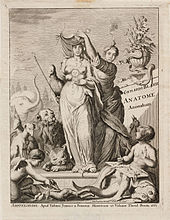Kim Kardashian’s outfit in Met Gala 2021 spawned controversy. Many people have questioned Kim’s T-shirt from head to toe, while others appreciated her authentic choice. However, the veiled woman is nothing new in the world of symbols, myths, religions, and arts.
One of the most ancient depictions of a woman in veil can be found in Egyptian tradition. The Goddess Neith was usually portrayed as a woman covered by a veil, mantle, or robe from head to toe. This motif was based on a statue of the Goddess Neith in the Egyptian city of Sais, that was mentioned by Plato and Plutarch. Under the statue, there was an inscription: “I am all that has been and is and shall be, and no mortal has ever lifted my mantle”. Her veil often symbolizes nature’s secret that is inaccessible to mortal creatures.

The Goddess Isis at the Herbert Hoover National Historic Site. https://en.wikipedia.org/wiki/Veil_of_Isis
The Goddess Neith was also known as Isis or identified as the Greek Athena. The cult of Isis was popular in Egypt, but then also spread across the Mediterranean world. She has many names around the world, like Minerva, Venus, Diana, Proserpina, and Ceres. Plutarch associated the Goddess with “the female aspect of nature”, those who “absorbs all creation”, and known as “the thousand-named”. Isis or Neith is also depicted with many breasts, representing her as the mother of all things. (Theodore Ziolkowski, 2008).
The early references to Neith’s veil suppose that it was used to conceal Goddess’s sexual appeal, as in Proclus, it must not be lifted because it is not a peplon or outer robe. Also, Plutarch wrote, it is an inner garment or loin cloth.

Science unveiling Nature in the frontispiece to Anatome Animalum, 1681. https://en.wikipedia.org/wiki/Veil_of_Isis
While ancient sources implying that what behind the veils is sexual or divine, early modern philosophical and literary texts suggest “truth” or “scientific knowing” as something hidden behind the veil. The 18-19th century German philosophers, like Friedrich Schiller, J. Gottlieb Fichte, Immanuel Kant, and Hegel, emphasized the truth behind the veil and their eagerness to lift it. It represents the spirit of the modern scientific effort to reveal nature’s secret.
Not only in Egyptian religion, but the veil-wearing woman is also familiar in all Abrahamic religions–Judaism, Christianity, and Islam. The idea of sexuality and divinity behind the veil still has significant influence today, as in Islam and Christianity. Both religions believe the veils wearing (hijab in Muslim and Nun’s veil in Christianity) can demonstrate their submission to God. Muslim women are also wearing hijab or veil to maintain modesty and prevent men’s gaze, and also avoid men from sin related to sexuality.
The idea of sexuality behind the veil was also popularized by modern opera. Oscar Wilde took the biblical tale of Salome and her seven veils (1893) to depict beauty and sexuality. Richard Strauss’s opera (1905) then popularized Wilde’s Dance of the Seven Veils, used the veil as a cover of Salome’s naked body, that invites sexual desire and conveys a blasphemous message. Meanwhile, Western performances, like striptease, use the veil as seductive means.
Besides religious and sexual motives, women wear a veil to represent the patriotic spirit, emancipation, or female elegance. In pre-WWII, Austrian women wore a veil or headscarf as a sign of practical and patriotically conservative. In the 1950s, the headscarf becomes a luxury item to show user’s elegance.
Up to now, the veiled woman topic is still relevant to the contemporary discussion, even becomes the center of the polemical debates in the Western world that banned certain types of head cover worn by some Muslim women. Another topic, like whether women are free or forced to veil themselves, also becomes a hot debate in many countries around the world.

